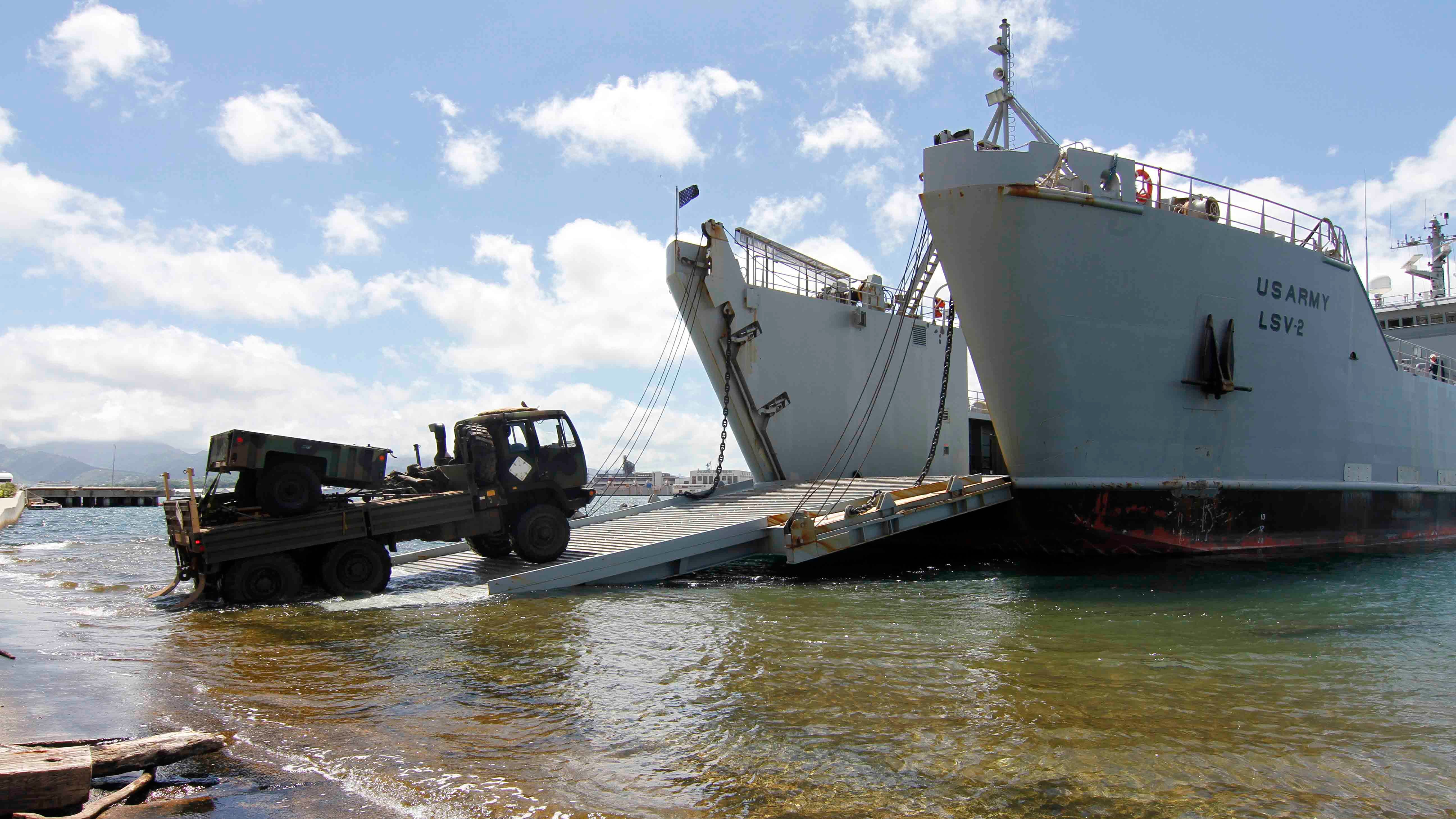Agility, Speed Critical for Sustainment Soldiers
Agility, Speed Critical for Sustainment Soldiers

Sustainment soldiers operating on the future battlefield, particularly in a theater as challenging as the Indo-Pacific, will need the ability to move quickly and adapt to ever-changing conditions, a senior logistics officer said.
“They’re going to have to be able to move fast, be able to disperse, to dig deep when they’re static, stay connected and start with sufficient stocks of critical materiel,” Maj. Gen. Mark Simerly, commander of the Army Combined Arms Support Command, the Sustainment Center of Excellence and Fort Lee, Virginia, said March 29 at the Global Force Symposium and Exposition hosted by the Association of the U.S. Army in Huntsville, Alabama.
As the Army designs the force it needs for 2030 and 2040, it will need to move away from the standardized formations that served their purpose over the past two decades and move toward formations that are “tailored for purpose and environment,” Simerly said during a panel discussion on sustaining the Army of 2040.
“As we look at the requirements of a [theater support command] that operates in Europe versus one that operates in the Pacific, there’s no reason why we should expect them to be identical as they are today,” Simerly said.
The certainty of contested logistics during large-scale combat operations prompted the Army to create a new cross-functional team focused on the problem. This ninth Army cross-functional team was announced during the Global Force meeting.
The Army also added a section to Field Manual 3-0: Operations, released last fall, on the importance of boosting the service’s watercraft fleet, particularly for operations in the vast Indo-Pacific.
Current watercraft formations will need to be modified to support operations, Simerly said. “Just functional companies are not going to be adequate, and we’re going to have to look at how we’re going to apply leadership to those operations in support of maneuvering in different ways,” Simerly said, positing that the sustainment enterprise will have to bring on new capabilities for light and heavy watercraft.
Soldiers in sustainment formations will also have to train differently and more realistically, and be able to understand the contested logistics environment, Simerly said, explaining that they’ll be performing under constant observation and in constant contact. They also will need to be trained to incorporate the Army’s autonomous capabilities and account for the speed, complexity and intensity of conflict, he said.
“That means we have to continue to develop leaders who can think critically, communicate effectively and develop creative solutions to operate under conditions of uncertainty,” Simerly said.

